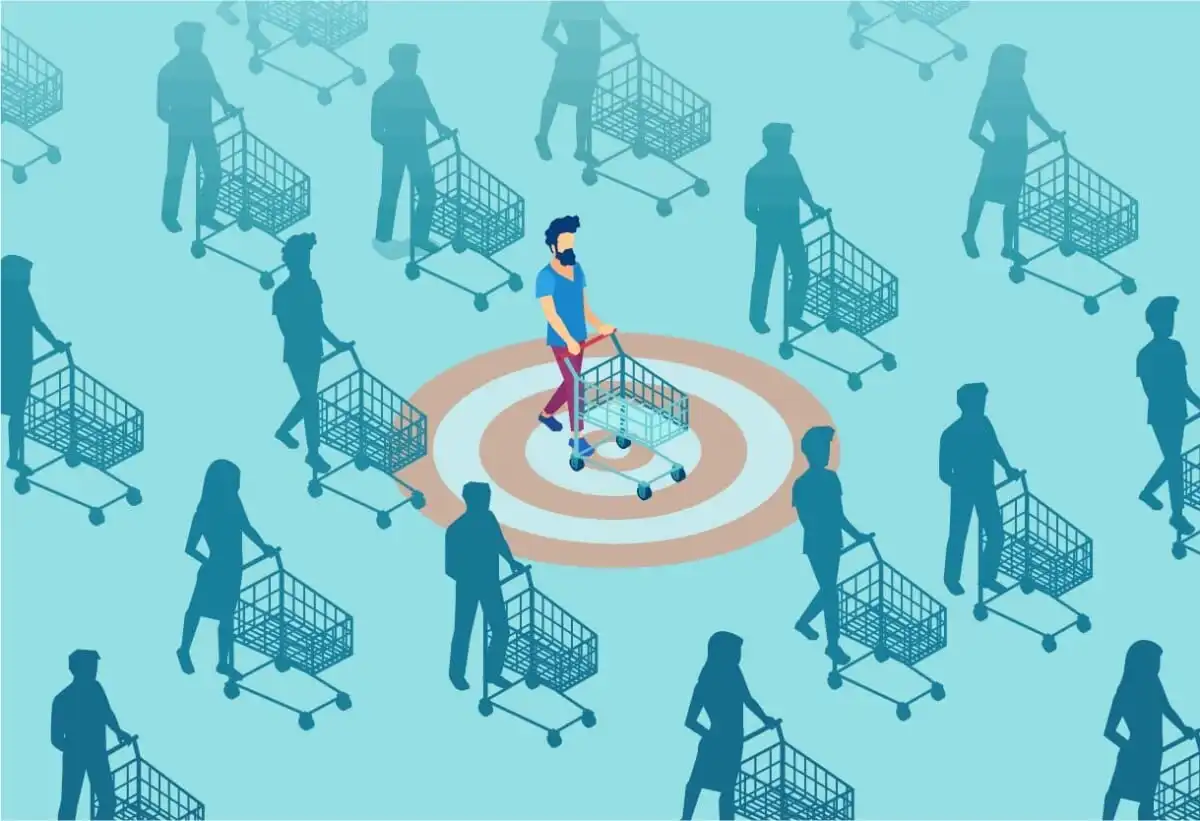
Updated, November 02, 2023
Even though 80% of grocery shoppers are in-store, brick-and-mortar retailers have not been able to unlock the full revenue potential of their in-store media inventory or attract as much incremental Retail Media budget as they could.
The reason is that traditional In-store Retail Media does not offer capabilities like real-time targeting, measurement, or programmatic selling like online Retail Media does.
However, an important nuance of this argument is that in-store media inventory is still bought and sold on the basis of location and timing — not audience centricity.
This significantly impacts both — the revenue and growth of In-store Retail Media.
In-store Retail Media should be about reaching ‘addressable audiences,’ not locations
The whole point of advertising is to reach customers directly with the most relevant message.
When media inventory is bought on the basis of location, the advertiser must assume that media placed at specific locations will, by default, reach specific audience segments.
For example, they must assume that a digital screen placed near the beverages aisle and playing beverage ads on a loop will play the right ad to the right beverage buyer at the right moment.
Because this approach assumes the addressable audience and infers contextual relevance and outcomes, it cannot offer real insight into the quality of reach.
As a result, in-store media inventory sold based only on location remains commoditized, and media owners (retailers) miss out on the opportunity to monetize the full revenue potential of those screens.
Retailers could increase the value of their media inventory significantly while also helping advertisers reach their goal more effectively if they could sell in-store media inventory based not only on location but also on available and addressable audiences.
Shifting to ‘audience-centric’ In-store Retail Media
Audience-centric targeting is why media owners can already charge premiums for specific online Retail Media inventory.
Similarly, if retailers shift their focus from ‘locations’ to ‘addressable audiences’ for In-store Retail Media, they will be able to set a higher value on the inventory and offer advertisers a much more compelling value proposition.
But how can retailers make the shift from traditional location-based media inventory to audience-centric In-store Retail Media?
The answer lies in advanced computer vision technology, which finally empowers media owners (retailers) to transform basic location-based digital screens into ‘smart digital signage’ based on addressable audiences rather than proxies such as only location or timing.
Smart digital signage – enabled by Retail Media technologies such as Advertima’s Audience AI – is ‘smart’ because it can detect who is standing in front of the screen, which pre-defined audience segment they best match, and show them the most relevant ad creative – all within milliseconds.

For example, in this visual, Advertima-powered smart digital signage identifies that the grocery shopper in front of it is a male, single. It combines that information with other attributes, such as attention, location, and timing, and decides which pre-defined seller segment this shopper best matches. Based on the match, it shows him the most relevant ad in real-time. Since Advertima does not require shopper PII or opt-in and is 100% GDPR compliant, it’s the perfect balance of contextual relevance and shopper privacy.
With Advertima, advertisers can reach 100% of addressable audiences and display the most relevant ad creative based on pre-defined audience segments rather than on location or timing alone.
This is a crucial innovation because it finally enables segmentation targeting of shoppers in a traditionally one-to-many environment.
Reaching Addressable Audiences In-store at Scale
While audience-centric segmentation targeting is a powerful innovation, to make the proposition truly compelling, media planners and advertisers must also be able to reach addressable audiences at scale.
This requires programmatic planning, buying, and scheduling of In-store Retail Media.
This is another stumbling block for location-based In-store Retail Media inventory. The current reality is that In-store Retail Media is still often manually planned and bought in advance from a fixed inventory pool.
In instances when it is possible to buy in-store media programmatically, it is fragmented from the larger programmatic ecosystem. That means the inventory is not connected to the larger media marketplace because it does not have a comparable media-buying currency.
For media planners, this adds to the complexity and makes it difficult to plan and optimize campaigns across multiple fragmented networks with varying technical capabilities and success metrics.
However, with advanced AI-powered systems such as Advertima, retailers can offer advertisers In-store Retail Media inventory based on a comparable currency such as ‘audience segments.’
Both buyers and sellers can also plug into a centralized marketplace to buy and sell In-store Retail Media inventory programmatically, in real-time, within the existing and familiar digital advertising ecosystem.
Audience-centric In-store Retail Media benefits all stakeholders
The audience-centric approach values in-store media inventory based on the reach expected among the right target groups rather than just location, assumptions about relevance, inferred outcomes, or aesthetics.
It reduces wastage, as ads are only played out to addressable audiences who match the defined target groups. More efficient use of the inventory creates more sellable inventory.
For advertisers, all this means better campaign optimization and better ROAS.
For retailers, as the owners of in-store media, it means higher Retail Media revenues because advertisers have the data they need to invest with confidence.
Beyond the advertiser and retailer, audience-specific contextual relevance of ads also means better CX for shoppers.
Ready to unlock the full revenue potential of your In-store Retail Media?
Advanced In-store Retail Media solutions such as Advertima’s Audience AI, powered by computer vision, bring online-like Retail Media capabilities to in-store and give retailers- the media owners – direct control of their inventory and addressable audiences.
Retailers can now connect their in-store audiences directly to the programmatic buying side of the industry, which is already made up of multiple highly innovative and established advertising products.
This significantly changes the economics of In-store Retail Media in favor of retailers, who are also the media owners, unlocking a source of high-margin retail media revenue by turning in-store shoppers into addressable audiences.
Get your free step-by-step guide to In-store Retail Media
Make the right move to unlock the full revenue potential of In-store Retail Media with our step-by-step guide to transform in-store shoppers into monetizable media audiences and grow the value of In-store Retail Media inventory.


